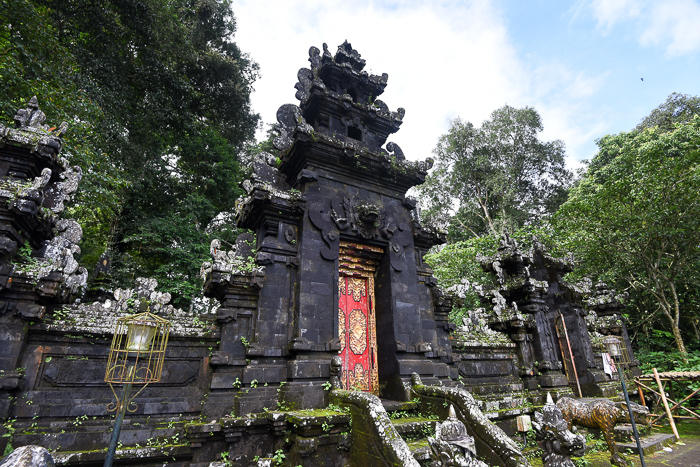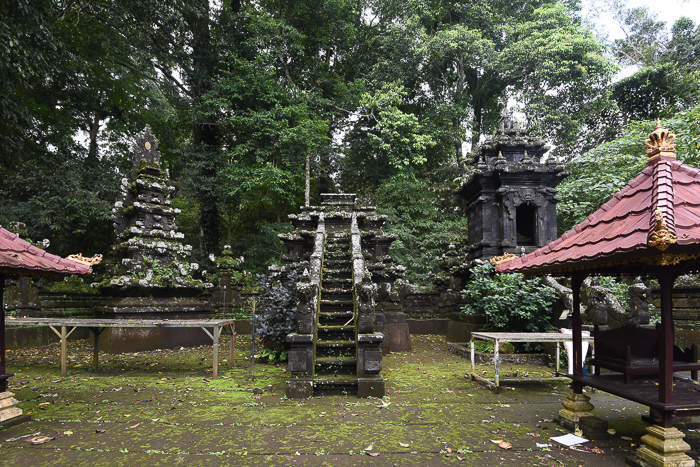Pura Luhur Mekori of Bali

Pura Luhur Mekori stands on the west flank of Mount Batukau, the highest peak in west-central Bali at about 2,200 meters altitude. The temple is directly adjacent to Jalan Raya Pupuan, the westernmost of the major north-south routes that span Bali’s hilly interior. Residents traveling along the road will often stop at the temple (near Belimbing village) to seek the protection and blessing of Ida Batara and other deities who are believed to reside there.

The site is also closely associated with naga folklore, as recounted in the Sang Naga Rarik. According to legend, after defeating a fellow naga named Gombang, Naga Rarik went in search of the Pusering Jagat (center, or navel, of the universe), where he could merge with the spirit of Mother Earth and reach moksa.
The journey there took him into the underworld, the Sapta Patala “Seven Underworlds.” The hole through which he passed is still present but, in homage to his deeds, was transformed into a grove of flowering trees by the will of Ida Sang Hyang Widhi Wasa, the supreme godhead. The complete legend of Sang Naga Rarik is extraordinarily complex, involving magical eggs, a battle between nagas, the death of Naga Rarik’s sister, and even an illicit love affair with a snake.

According to Kartika Sari, the main theme of the story is a didactic morality tale. Specifically, as a result of the karmic consequences of Naga Rarik’s mother, who fell in love with a snake demon, Naga Rarik was fated to become a naga and guardian of the community. As recompense for his mother’s ill deeds, he journeyed to the Pusering Jagat and reached liberation (moksa). Through this transformation, the karmic stain of his ancestors was washed away, with Naga Rarik serving henceforth as a protector of Belimbing Village.
The physical form of Pura Luhur Mekori is unfortunately less impressive than the underlying legend. The primary pavilions were recently rebuilt in black volcanic stone, likely harvested from the slopes of Mount Agung. Compensating for this is a rapid patina of age as lichens, moss, and other growth rapidly claim the temple in the cool, damp environment.


